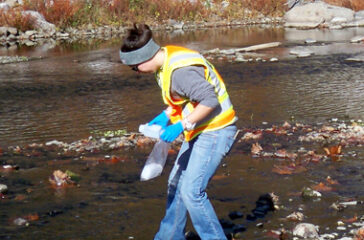Communities wrestle with pricey PFAS clean-up efforts
By Sascha Brodsky
On a recent wintry day, Deborah Brown walked along the edge of Lake Washington in Newburgh, New York, and pointed to a sign warning people not to fish because the waters are known to be contaminated with toxic chemicals.
 EWG
EWG